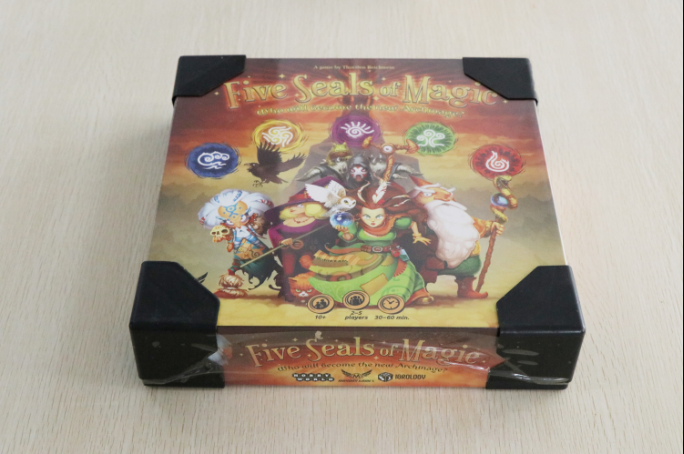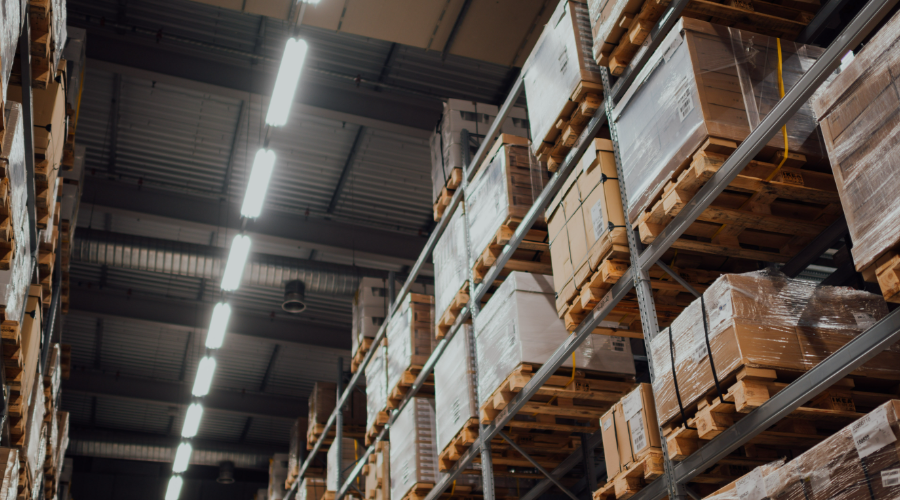Table of Contents
Get Custom eCommerce Fulfillment Service
Book a Meeting
The Complete Guide to Board Game Fulfillment: Smart Packaging and Kitting Strategies
Time: Nov 05,2025 Author: SFC Source: www.sendfromchina.com
When you’re shipping a board game, you’re doing more than moving boxes. You’re delivering an experience. At SendFromChina, we see first-hand how packaging and kitting influence cost, damage rates, and customer satisfaction. Below is a detailed, practical guide aimed at publishers, designers and fulfilment partners of board games — especially those running global campaigns, e-commerce stores or retail distribution. Our goal: reduce damage, minimise cost, streamline operations, and enhance the unboxing moment.

1. Why packaging and kitting matter for board game fulfillment
You’ve spent time designing your game — the artwork, components, rulebook, prototypes. But when it leaves your warehouse, fulfillment becomes the “final mile” of your brand promise. As one Kickstarter-fulfilment guide puts it: “fulfillment isn’t just the final step … it’s the one that defines how people remember you.”
Here’s what proper packaging & kitting do:
Protect game components (boards, cards, tokens, miniatures) from transit damage and shifting.
Ensure the right combination of items goes into each shipment (especially for expansions, add-ons, Kickstarter stretch goals).
Optimise shipping cost by managing cube weight / dimensional weight.
Enhance customer perception through presentation and unboxing.
Reduce returns, replacements and negative reviews.
2. Understand your board game fulfilment environment
Before diving into tips, let’s sketch the special demands of board games in the fulfilment chain:

Bulk and weight
Board games can be heavy. Add a large board, miniatures, foil bags, and you’re shipping something far heavier than a standard retail product. Shipping cost scales rapidly with weight and size.
Dimensional weight (DIM weight)
Most carriers charge based on actual weight or “dimensional weight” (the space the box occupies). Oversized but under-filled packaging often leads to higher cost. A fulfilment article notes that packaging design must integrate shipping considerations.
Multiple components, SKUs, add-ons
Especially in Kickstarter/output scenarios you’ll have base games + expansions + promos. Kitting (assembling items into a ready-to-ship unit) is essential. According to kitting-services literature: “Gaming and hobby kits … often use kitting to package all of the components into a single kit.”
Global fulfilment
Often board game backers are worldwide. Customs, duties, regional warehouse hubs, palletised freight all play a role. One blog emphasises that for global shipping you must account for customs/VAT and regional packaging requirements.
3. Packaging best-practices for board game fulfillment

Design for durability
Start from the box itself. Your retail game box isn’t just a shelf item — it’s a transit container. Key points:
Use rigid chipboard or strong corrugated carton for your primary box.
Consider internal inserts (cardboard trays, vacuum-formed plastic or die-cut supports) to keep pieces from shifting.
Shrink-wrap the box (to prevent scuffs, damp, opening in transit).
For outer shipping cartons, lean toward double-wall corrugated for international freight or pallet shipments.
Optimize size and weight
Over-packing (leaving too much void space) means more shifting and higher shipping costs; under-packing risks damage. One tip: choose a shipping carton that leaves about 1 inch (25mm) of cushion on all sides.
Also: measure and test your final packed unit to calculate DIM weight. This should influence your carton size and stacking strategy.
Protective materials
Use bubble-wrap, foam sheets or kraft paper to fill voids and protect corners.
Wrap in a plastic sheet or shrink wrap to provide a moisture barrier — especially relevant for sea-freight and humid climates.
Mark the carton “Fragile”, include orientation (“This side up”) if heavy boards inside. Good labelling may reduce mishandling.
Branding and unboxing experience
While durability is key, presentation counts. The moment the end-user opens the box is a key touchpoint. Consider:
A well-designed insert that organises pieces neatly and makes setup intuitive.
Clean, consistent branding across outer and inner packaging.
Consider giving conditional attention to finish options: soft-touch coatings, foil stamping, matte vs gloss — these don’t help transport, but they help perception.
Shipping from China/Manufacturing source
Since SendFromChina is based in China, we emphasise:
When items leave your factory, pack them in export-cartons with safe stacking, pallet wrap, and clearly marked lot numbers.
Ensure the export cartons are appropriately sized for freight (sea-container or air-freight) to reduce wasted space.
Pre-plan split shipments: e.g., send a portion by air for early backers, the rest by sea. This may influence how you package at source.
4. Kitting — assembling the game for fulfilment
Kitting is the process of combining all the components (cards, game board, tokens, rule book, miniatures) into a single “kit” that will become the shipped unit. Done well, it reduces errors, streamlines labour and improves fulfilment speed.

Pre-sort and organise components
Before you begin the packing line:
Create labelled bins/trays for each component (e.g., Rulebook, Player Tokens, Miniatures Bag, Stretch-Goal Box).
Maintain checklists: each kit must include all required items. One negligence item that’s often emphasised in board game fulfilment is missing components.
For large volumes, consider semi-automated conveyors or workflows that minimise manual handling.
Implement the kitting process
Define the steps: (1) retrieve components, (2) inspect for damage, (3) assemble into packaging, (4) seal the unit.
Use barcode scanning or digital tracking to ensure accuracy (especially for high-volume shipments).
If you have add-ons or expansions, ensure that your kitting system can mix & match correctly — e.g., base game + expansion + promo. Failing to do so often results in mis-shipped kits.
Implement spot-checks: random audits of assembled kits to ensure correctness and completeness.
Efficiency and labour ergonomics
According to fulfilment-kitting literature:
Simplify tasks so each associate has only one or two steps. This reduces fatigue and error.
Ensure components are within ergonomic reach. Minimise bending, turning, stretching — using trays or conveyors can help.
Keep replenishment and takeaway (removing finished kits) optimised to avoid bottlenecks.
Strategic inventory and SKU management
Create kit SKUs: after kitting, the bundled unit might have its own SKU rather than tracking all individual pieces. This simplifies picking and fulfilment.
Manage expansions and stretch-goals: track how many kits need the add-on, how many don’t. In campaigns it’s common to have multiple variants.
Build a buffer stock of pre-kitted units if you have predictable demand or anticipate spikes (e.g., fulfilment waves). This helps you dispatch quickly.
5. Outer shipping, warehousing and global distribution
Once your kits are prepared, you still need to think about warehousing, shipping, and fulfilment—especially for international customers.

Choose the right fulfilment model
There are several options: self-fulfil, dedicate a warehouse, or use a 3PL. For board games, many campaigns opt for using a specialised fulfilment partner. One guide notes: “For most board game Kickstarters … partnering with a specialised 3PL is more scalable.”
Freight, import/export and distribution
If shipping large quantities from China to regional fulfilment hubs (US, EU, Australia, etc.), choose between sea freight (slower, cheaper) vs air freight (fast, costly) based on timelines.
At the hub, de-palletise, store, and fulfil to end-customers.
Label cartons correctly with commodity codes, destination labels, customs documentation. Incorrect labels often lead to delays or extra fees.
Warehousing and cartonisation
For storage, your kits should be palletised systematically: same SKU on each pallet helps picking.
Outer shipping cartons should avoid over-sizing (to minimise unused void and cube weight charges). A package-packing guide reminds: choose durable boxes that leave about one inch of cushion.
For very large boards or heavy games, plan stacking heights carefully in pallets to avoid crushing.
Monitoring and fulfilment accuracy
Track shipments with scanning and tracking numbers. One fulfilment service for board games promises tracking for each parcel.
Monitor damage rates and returns. If you notice a pattern of damaged corners or missing pieces, loop back to your packaging/kitting process for improvements.
Keep communication open with customers—especially for Kickstarter backers, who are waiting from several months. One blog emphasized delays or damaged items can damage your reputation irreversibly.
6. Common pitfalls and how to avoid them
Here are frequent issues we see in board-game fulfilment — along with solutions.
Oversized cartons → high shipping cost: Many creators neglect DIM weight. Solution: measure boxed kit early, choose a compact shipping carton, test shipping cost.
Missing components in kit: A missing rule-sheet, token bag or mini can degrade experience. Solution: use checklists, barcode scanning, spot audits.
Poor box interior design → broken pieces: If tokens move around, boards warp, miniatures break. Solution: use custom inserts, foam supports, shrink-wrap.
Unprepared for international customs/duties: Backers may be shocked by import fees. Solution: work with logistics/3PL that handles DDP (Delivered Duty Paid) or communicates clearly to buyers.
Fulfilment partner inexperienced with board games: Standard 3PLs may not understand the unique SKUs, add-ons, heavy pieces. Solution: vet fulfilment partner for “board game experience”.
7. Practical checklist for SendFromChina partners
Here’s a practical, ready-to-use checklist tailored to a China-based logistics fulfilment partner workflow:
Factory/Inbound stage
Confirm final kit design, carton dimensions & weight.
Ask factory to pack kits with correct inserts, shrink-wrap if needed.
Label cartons for export: SKU, quantity per carton, weight, pallet position.
Choose freight mode (sea vs air) with lead-time vs cost in mind.
Arrival at warehouse / receiving
Upon receipt, inspect for damage/variance.
If using regional hub, de-palletise and stage inventory.
Assign warehouse SKUs, track batch lots, replenish buffer stock.
Kitting / pre-assembly (if needed)
If add-ons or special editions are separate, set up kitting station.
Use ergonomic layout; labels & checklists in place.
Conduct spot audits on finished kits for completeness.
Packaging & outbound shipping
Select shipping carton close to kit size (leaving about 1″ of cushion).
Use cushioning material (bubble, foam, kraft).
Apply moisture barrier where needed.
Label outer carton: SKU, quantity, “Fragile” as required.
Calculate DIM weight and preferred shipping lanes.
Global distribution & tracking
Decide fulfilment hub locations (US, EU, Australia, Asia) to reduce shipping cost and import duty burden.
Provide tracking numbers to end-customers/backers.
Monitor returns/damage and feed issues back to factory/package design.
Continuous improvement
After first wave of shipments, analyse damage rate, shipping cost per unit, customer feedback.
Adjust packaging (box strength, inserts, carton size) or kitting (checklist, batching) as needed.
When you plan future expansions, design packaging/kitting with scalability in mind.
8. Why SendFromChina is your ideal China-based 3PL for board games
As a China-based third-party logistics provider, we bring specific advantages:
Proximity to factories: immediate coordination on inbound packaging/kitting before export.
Export expertise: shipping from China involves export-documentation, palletisation, container consolidation — we handle this routinely.
Experience with international distribution: we connect to global carrier networks, regional hubs and last-mile fulfilment.
Kitting and fulfilment know-how: we focus on high-SKU, high-component-count items such as board games.
End-to-end visibility: from factory to your backer’s doorstep, fewer hand-offs means fewer errors.
If you are a board game creator or publisher looking to optimise packaging, kitting and fulfilment, SendFromChina can support you from the moment production wraps to the moment your customer opens the box.
9. Conclusion
Packaging and kitting are more than just operational tasks — they’re strategic levers. From the moment your board game leaves the factory to the moment a player opens the box, every decision impacts cost, quality, brand perception and customer satisfaction. By designing for durability, optimising size and weight, systematising kitting and leveraging global fulfilment networks, you give your product the best chance of landing safely — and delightfully — across the world.
10. FAQs
1. What exactly is kitting?
Kitting is the process of assembling multiple components (cards, board, tokens, expansions) into a single kit that ships as one unit.2. How do I choose the right shipping carton size?
Measure your packed kit dimensions, allow about 1 inch (25mm) of cushion space, choose a durable box, and aim to minimise void space to reduce shipping cost.3. Do I need to shrink-wrap my game boxes?
Yes — shrink-wrapping protects from scuffs, moisture and opening in transit. It’s a common practice for board-game fulfilment.4. Why should I work with a 3PL instead of shipping myself?
For large volumes, international shipping, multi-component kits and warehouse storage, a 3PL offers scalability, experience and cost savings. For small runs it may still make sense to self-ship.5. What are the key cost drivers in board game fulfilment?
Major cost drivers: weight & size of the game kit (shipping cost), number of shipping cartons, packaging materials, damage/returns, international duties/customs and labour for kitting. Proper planning early reduces surprises. Post Views:12
Post Views:12
Copyright statement: The copyright of this article belongs to the original author. Please indicate the source for reprinting.
Previous Post
Next Post
How Supply Chain Analytics Helps Ecommerce Brands Scale Smarter
TAGS
Hot Research
Recent News
- Third Party Logistics Definition, Process, and Advantages
- What Is Ecommerce Fulfillment? The Definition, Process, and Benefits
- Where Does Shein Ship From
- The Complete Guide to Board Game Fulfillment: Smart Packaging and Kitting Strategies
- How Supply Chain Analytics Helps Ecommerce Brands Scale Smarter
Get Custom eCommerce Fulfillment Service
Book a Meeting
Get a Custom China Fulfillment Solution with FREE Storage for 30 Days
 Want to know about our services, fees or receive a custom quote?
Want to know about our services, fees or receive a custom quote?
 Please fill out the form on the right and we will get back to you within a business day.
Please fill out the form on the right and we will get back to you within a business day.
 The more information you provide, the better our initial response
will be.
The more information you provide, the better our initial response
will be.





 TAGS:
TAGS: